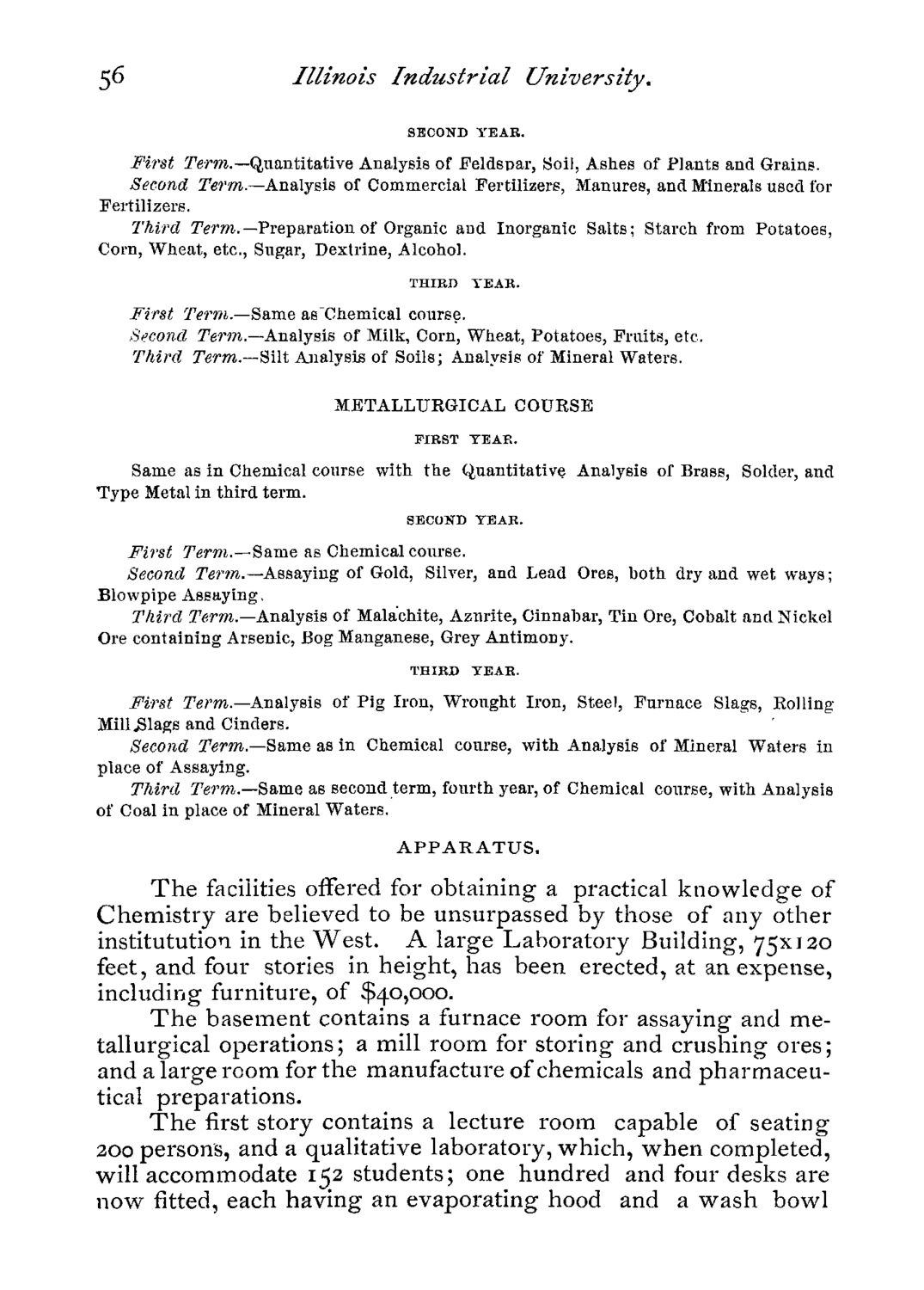| |
| |
Caption: Course Catalog - 1880-1881
This is a reduced-resolution page image for fast online browsing.

EXTRACTED TEXT FROM PAGE:
56 Illinois Industrial SECOND YEAR. University. First Term.—Quantitative Analysis of Feldspar, Soil, Ashes of Plants and Grains. Second Term.—Analysis of Commercial Fertilizers, Manures, and Minerals usecl for Fertilizers. Third Term.—Preparation of Organic and Inorganic Salts; Starch from Potatoes, Corn, Wheat, etc., Sugar, Dextrine, Alcohol. THIRD YEAR. First Term.—Same as "Chemical course. Second Term.—Analysis of Milk, Corn, Wheat, Potatoes, Fruits, etc. Third Term.—Silt Analysis of Soils; Analysis of Mineral Waters. METALLURGICAL COURSE FIRST YEAK. Same as in Chemical course with the Quantitative Analysis of Brass, Solder, and Type Metal in third term. SECOND YEAR. First Term.—Same as Chemical course. Second Term.—Assaying of Gold, Silver, and Lead Ores, both dry and wet ways; Blowpipe Assaying, Third Term.—Analysis of Malachite, Aznrite, Cinnabar, Tin Ore, Cobalt and Nickel Ore containing Arsenic, Bog Manganese, Grey Antimony. THIRD YEAR. First Term.—Analysis of Pig Iron, Wrought Iron, Steel, Furnace Slags, Rolling MillJ31ap;s and Cinders. Second Term.—Same as in Chemical course, with Analysis of Mineral Waters in place of Assaying. Third Term.—Same as second term, fourth year, of Chemical course, with Analysis of Coal in place of Mineral Waters. APPARATUS. The facilities offered for obtaining a practical knowledge of Chemistry are believed to be unsurpassed by those of any other institutution in the West. A large Laboratory Building, 75x120 feet, and four stories in height, has been erected, at an expense, including furniture, of $40,000. The basement contains a furnace room for assaying and metallurgical operations; a mill room for storing and crushing ores; and a large room for the manufacture of chemicals and pharmaceutical preparations. The first story contains a lecture room capable of seating 200 persons, and a qualitative laboratory, which, when completed, will accommodate 152 students; one hundred and four desks are now fitted, each having an evaporating hood and a wash bowl
| |